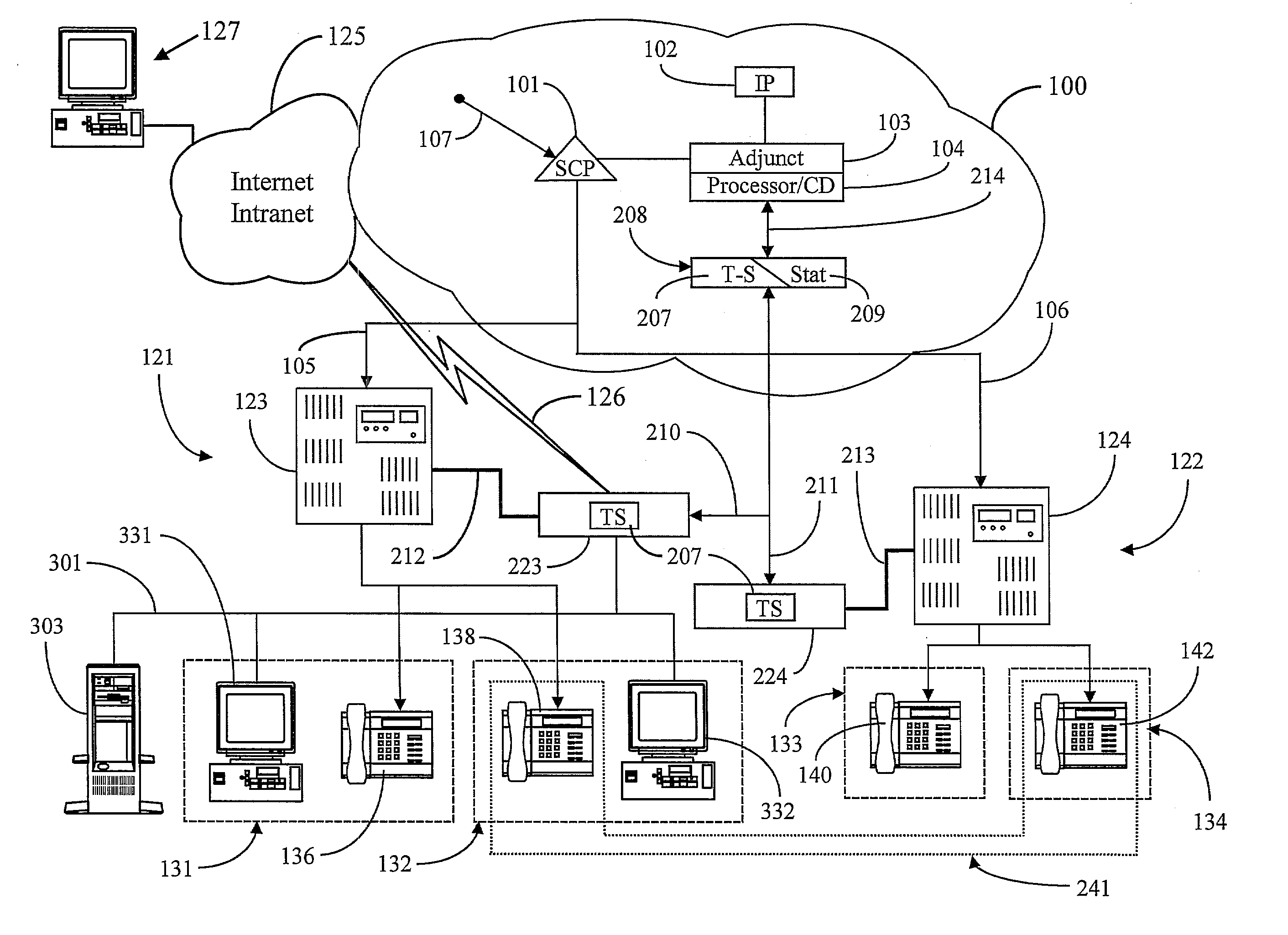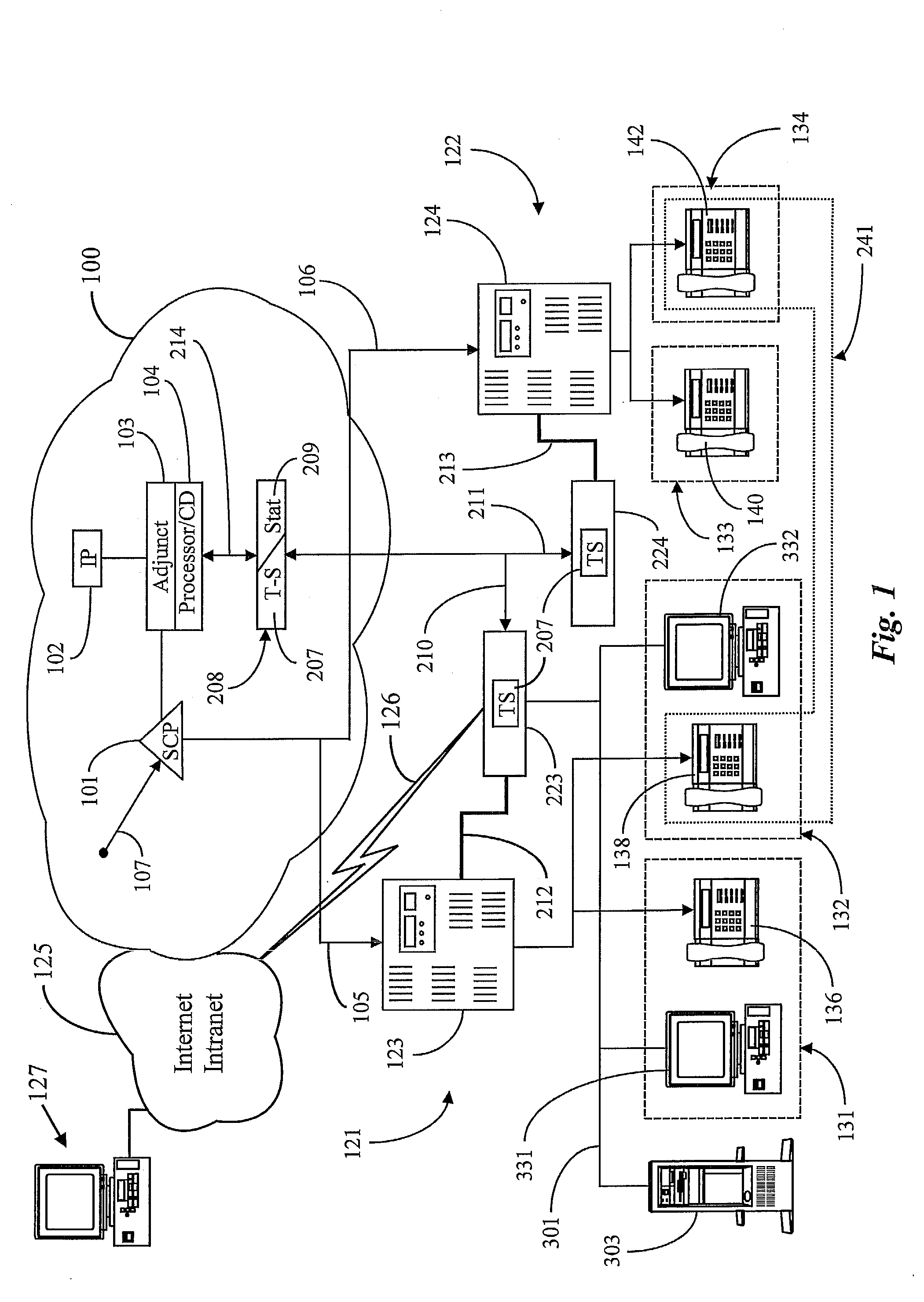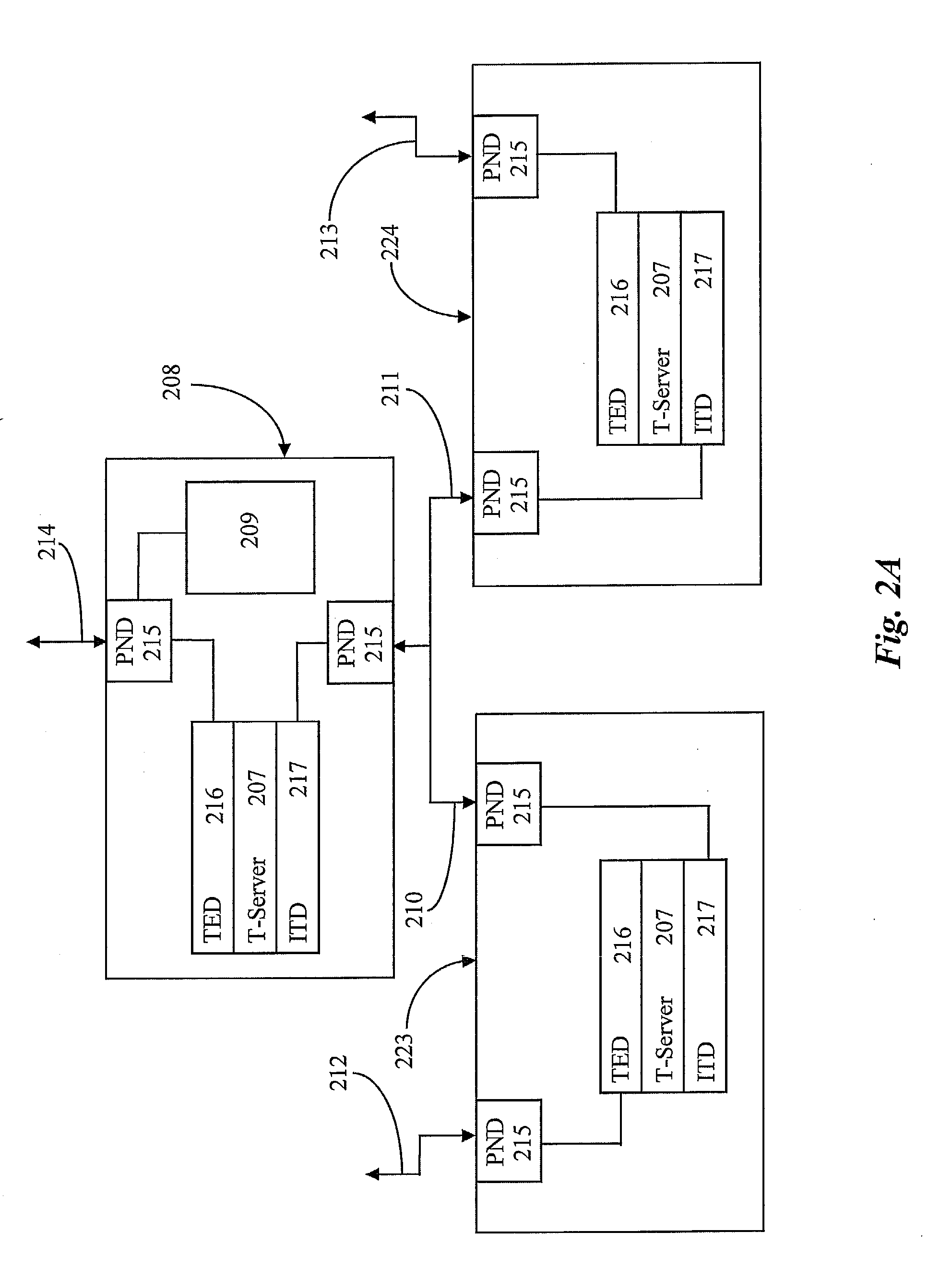Escalatory Reactive Call Routing
a call routing and reactive technology, applied in the field of intelligent call routing systems, can solve the problems of a call center system, a call center that is not operating normally, and the range of switches is limited, and the routing that can be done is very limited
- Summary
- Abstract
- Description
- Claims
- Application Information
AI Technical Summary
Benefits of technology
Problems solved by technology
Method used
Image
Examples
Embodiment Construction
General Description
[0043]FIG. 1 is a system diagram of a call-routing system according to a preferred embodiment of the present invention, comprising two call centers 121 and 122. In this embodiment there may be many more than the two call centers shown, but two is considered by the inventors to be sufficient to illustrate embodiments of the invention. Each of call centers 121 and 122 includes a telephony switch (switch 123 for center 121 and switch 124 for center 122) providing routing to individual agent stations.
[0044] Call centers 121 and 122 in FIG. 1 are CTI-enhanced by virtue of a processor connected by a high-speed data link to the associated call center switch. At call center 121, processor 223 is connected by link 212 to switch 123, and at call center 122, processor 224 is connected to switch 124 by link 213. Each processor 223 and 224 includes an instance of a CTI application 207 known to the inventors as T-Server (T-S) 207. Further, each processor 223 and 224 at each ...
PUM
 Login to View More
Login to View More Abstract
Description
Claims
Application Information
 Login to View More
Login to View More - R&D
- Intellectual Property
- Life Sciences
- Materials
- Tech Scout
- Unparalleled Data Quality
- Higher Quality Content
- 60% Fewer Hallucinations
Browse by: Latest US Patents, China's latest patents, Technical Efficacy Thesaurus, Application Domain, Technology Topic, Popular Technical Reports.
© 2025 PatSnap. All rights reserved.Legal|Privacy policy|Modern Slavery Act Transparency Statement|Sitemap|About US| Contact US: help@patsnap.com



